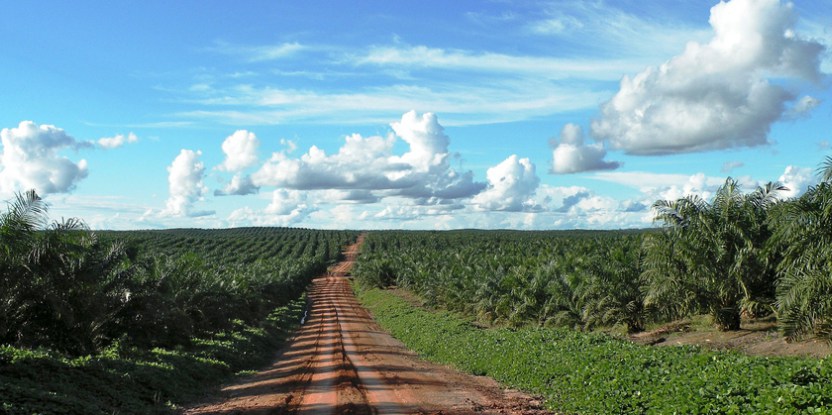
BOGOR, Indonesia (15 April 2014) — Policymakers and conservationists often overlook the importance of rural forests and the local knowledge that has sustained them for centuries, according to a report published in the journal “Ecology and Society” that reflects on the way sustainable development policies have affected rural forests.
Rural — or domestic — forests exist all over the world, from temperate countries to arid and tropical humid regions. They are managed by local people as part of their agricultural and livelihood activities, according to the journal, which featured eight studies on rural forests in France, Morocco, Southeast Asia and Africa funded under the Public Policies and Traditional Management of Trees and Forests project (known by its French acronym, POPULAR).
Rural forests are affected by national forest policies and regulations. However, state-run policies often do not incorporate what researchers call the “logic of rural forests,” researchers reported in a study titled “Public policies and management of rural forests: Lasting alliance or fool’s dialogue?”
“People in rural forests have a particular way of envisioning production and subsistence systems, and creating an alliance between forest ecosystems and agriculture,” said Geneviève Michon, a scientist with l’Institut de recherche pour le développement (IRD) who led research on the resilience of several domestic forest over the world (based on chestnut trees in Corsica, France; argan trees in Morocco; and agroforests in Indonesia).
Unlike the modern representation of nature domestication for production, rural people don’t introduce a clear distinction between “forest” and “agriculture.”
LOGIC OF RURAL FORESTS
Management of rural forests relies on complex practices that domesticate trees, ecosystems and landscapes to serve human needs, researchers said, citing earlier studies. In this domestication process, they take advantage of natural vegetation dynamics rather than combating them as in conventional agriculture.
In what Michon has called “the most humanized of all European forest trees,” for example, more than 15 centuries of domestication of the chestnut tree, which is reproduced by grafting, has not erased the wild characteristics of the tree — high canopy, vigor and capacity to survive without human care — and chestnut forests incorporate grafted varieties as well as wild trees.
Domestication is often invisible, which conceals the intricacies of rural forest management and leads to a misunderstanding of its importance, the researchers said.
While some domesticated trees — like the argan in Morocco — appear to be “wild”, researchers point out they are, in fact, carefully tended. Earlier research has shown that local people cultivate a variety of shapes for their forests: in rangelands, for instance, techniques such as selective pruning can help or hinder goat foraging.
In Indonesia, some NGOs want to protect rural forests for the sake of conservation, but their policies can undermine the interests of local people in terms of limiting access to land or forbidding slash-and-burn techniques
Agroforests in Indonesia evolved from planting trees in areas cleared by swidden, an agricultural technique in which rotational fires are set to clear and regenerate fertile land for planting. Although it has been domesticated, the resulting forest resembles a natural ecosystem with a high canopy, dense undergrowth and high levels of biodiversity — all with minimal human interference, Michon said.
LANDSCAPE APPROACH
Previous research also shows how forest farmers invest more energy into domesticating entire landscapes rather than focusing on individual species. This includes building terraces to prevent soil and water runoff, introducing differentiated rights that divide forests into distinct areas (such as orchards for fruit production, foraging space and timber production) or varying the landscape among open fields, forest plots and individual trees.
“This type of management, where you do a little bit of everything, and everything is optimized, is probably the best real-life example of sustainability, and it is largely ignored by mainstream forestry,” said Robert Nasi, senior scientist at the Center for International Forestry Research (CIFOR) who, along with Michon, co-led the POPULAR project.
“When left to themselves, people in rural forests manage their resources reasonably well,” he said. “The way they do does not fit the modern standards of production rationalization, but if you look at the result over the long term, they produce significant economic and social benefits for rural people, and they can adapt to change. As a result, rural forests are very resilient.”
Over the centuries, rural forests have survived despite national policies that impose intensive agriculture and modernization, the study said. Due to the global economic crisis, however, national — and even local — governments are paying more attention to rural forests as part of pro-active socio-environmental and economic strategies. This does not always improve the fate of rural forests.
“In Indonesia, some NGOs want to protect rural forests for the sake of conservation, but their policies can undermine the interests of local people in terms of limiting access to land or forbidding slash-and-burn techniques,” Michon said. The NGO approach is perhaps less extreme than that of forestry administrators, but it still pays little attention to the logic of rural forests.”
Michon and Nasi are optimistic: even if global views are not about to change abruptly, globalization may open up new avenues for appreciation of rural forests. Already, they say, foresters and biologists have begun considering humans as a valid part of the forest ecosystem rather than as invaders. Specialists in ethnoscience have also helped cast the interactions between local people and forests in a more positive light. New trade and consumption patterns (environmental certification, fair trade, geographical indication systems) can also help these systems develop their own logic while benefitting from the outside world.
For more information about the issues discussed in this article, please contact Robert Nasi, r.nasi@cgiar.com
We want you to share Forests News content, which is licensed under Creative Commons Attribution-NonCommercial-ShareAlike 4.0 International (CC BY-NC-SA 4.0). This means you are free to redistribute our material for non-commercial purposes. All we ask is that you give Forests News appropriate credit and link to the original Forests News content, indicate if changes were made, and distribute your contributions under the same Creative Commons license. You must notify Forests News if you repost, reprint or reuse our materials by contacting forestsnews@cifor-icraf.org.

